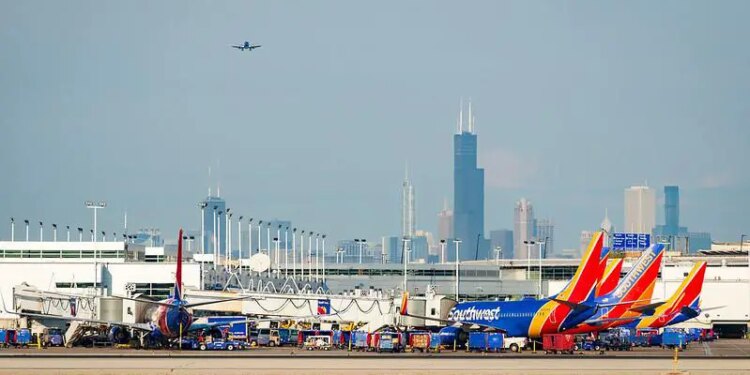In 2024, Chicago Midway International Airport (MDW) will set up a passenger lounge for the primary time in its historical past. Based on the Chicago Division of Aviation (CDA), which operates O’Hare Worldwide Airport and MDW, “Membership MDW will probably be out there for all travellers no matter airways or class of service.”
Passengers will be capable of use the lounge with a $50 day go, or by turning into members of Precedence Go, a agency that provides entry to impartial airport lounges. Precedence Go has tiers of yearly membership prices starting from $99 to $469 for probably the most premium degree. Moreover, the Halfway lounge will present complimentary meals and drinks.
Additionally Learn: Chicago developer secures rare US$233 mn financing for Fulton office building
The airport’s companies are round 95% home and are dominated by Southwest Airways. They’ve greater than 90% market share at MDW. MDW, which has been in operation since 1927. It has by no means had a passenger lounge of the kind that has turn into customary at hub airports.
Development timeline for the Chicago Halfway Worldwide Airport lounge
Development on the lounge is slated to start early subsequent yr, with CDA eyeing a fall 2024 opening.
At present, the three busiest airports in the USA with out airport lounges are Chicago Halfway (MDW), Dallas Love Discipline (DAL), and Houston Passion (HOU). These are three of Southwest’s main hubs, and the airline doesn’t run its personal lounges. Nevertheless, some Southwest travellers would possibly profit from lounges. Thus it’s fascinating that no lounge operator has bid on a lounge like this, at the very least till now.
Jamie Rhee, commissioner of the CDA, states that the “new lounge within the coronary heart of Halfway is the subsequent step in elevating the passenger expertise as Halfway continues to see journey numbers that outpace pre-pandemic statistics.”
The three,300-square-foot lounge will probably be positioned on the junction of MDW Concourses A and B. The design will “draw inspiration from Chicago’s wealthy architectural historical past, that includes high-contrast, monochromatic tones,” in keeping with the CDA.



